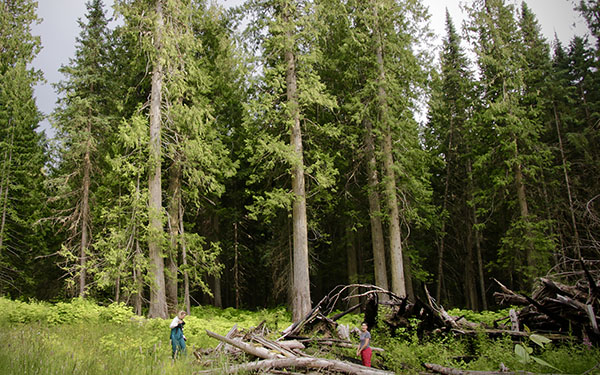Forest disturbances have long-lasting effects on forest functions and how the forest re-grows. Accounting for long-term time scales and different how forests regrow post-disturbance poses a significant challenge to designing effective conservation and mitigation strategies.
The study suggests these challenges can be addressed by embracing a whole of landscape perspective. While carbon sequestration, carbon storage, or biodiversity cannot all be maximized everywhere on small spatial scales, a larger landscape has the capacity to deliver better levels of biodiversity and carbon co-benefits.
As all three objectives cannot be simultaneously maximized in small reserves, it is important to conserve large tracts of more strictly protected forest landscapes to maintain a range of regenerating stages. The size of protected areas should be guided by the minimum dynamic area framework, which would help to determine the minimum reserve size required to incorporate natural disturbance regimes and maintain ecological processes.
In addition, forests must be allowed to attain older ages if they are to reach their full biodiversity and carbon storage potential. Protecting existing primary forests and increasing the size of strictly protected forest landscapes (for example, 're-wilding') is needed to encompass shifting patch mosaics driven by a wide range of disturbances. These strategies would help maintain a range of ecosystem functions in times of accelerating environmental change.
Article authors
Heather Keith
Additional authors
Martin Mikoláš, Marek Svitok, Radek Bače, Garrett W. Meigs, William S. Keeton, Arne Buechling, Volodymyr Trotsiuk, Daniel Kozák, Kurt Bollmann, Krešimir Begovič, Vojtěch Čada, Oleh Chaskovskyy, Dheeraj Ralhan, Martin Dušátko, Matej Ferenčík, Michal Frankovič, Rhiannon Gloor, Jeňýk Hofmeister, Pavel Janda, Ondrej Kameniar, Jana Lábusová, Linda Majdanová, Thomas A. Nagel, Jakob Pavlin, Joseph L. Pettit, Ruffy Rodrigo, Catalin-Constantin Roibu, Miloš Rydval, Francesco M. Sabatini, Jonathan Schurman, Michal Synek, Ondřej Vostarek, Veronika Zemlerová, and Miroslav Svoboda
Reference
Mikoláš, M., Svitok, M., Bače, R., Meigs, G. W., Keeton, W. S., Keith, H., Buechling, A., Trotsiuk, V., Kozák, D., & Bollmann, K. (2021). Natural disturbance impacts on trade-offs and co-benefits of forest biodiversity and carbon. Proceedings of the Royal Society B, 288(1961), 20211631. https://doi.org/10.1098/rspb.2021.1631


